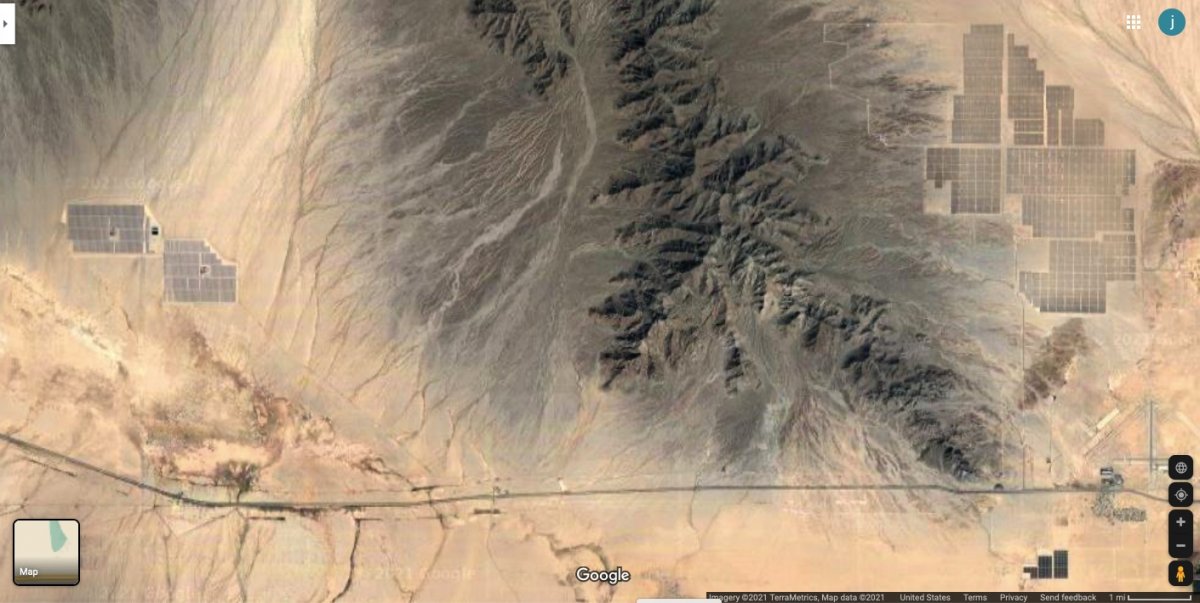April 26, 2021
What does turning off the lights when you leave the room, have to do with preserving wild spaces? Everything. Here’s why.
California has adopted very aggressive decarbonization goals: to abandon all fossil fuels and to meet current electricity demand, plus massive new "electrification" for homes, stores, industry, and tens of millions of vehicles large and small with 100% “clean energy” by 2045. The problem is that if this is done wrong it could end up more than doubling current electrical power needs, with multiple unintended consequences.
To be specific, according to state energy agencies if we truly “electrify everything,” shutting down fossil fuel power plants, and even disallowing biofuels, we would need 170,000 megawatts of new renewable power infrastructure, plus tens of thousands of megawatts of energy storage. This is a staggering amount of new infrastructure when you consider that a typical natural gas power plant is only a few hundred megawatts.

Large scale solar projects on pristine public land as seen from space. Sited on formerly “limited use” land, these abut the Mc Coy Wilderness. On the left is 3 sq mi of solar thermal, and on the right about 7 sq mi at full buildout, see the shadowy fence line, of solar PV. There are over 25,000 acres of BLM projects (the size of San Francisco), and and another 10,000 acres in the BLM permit pipeline. Without aggressive Distributed Energy Resources, the forecast need is for half a million acres converted to large scale solar (nearly 800 square miles) by 2045.
No Free Lunch
There is no free lunch when it comes to large-scale renewable energy generation, which is the utilities’ favorite way to decarbonize. Only geothermal energy is quite environmentally benign, with minimal land burden per megawatt. But the known geothermal potential in California is just a few thousand megawatts. While large-scale wind consumes enormous amounts of land, cut up by roads and 50-story-high turbines causing mortality of unsuspecting birds and bats.
But “big solar” is far and away the most destructive renewable technology, and the developers’ preference is to site solar farms in the desert where the sun shines bright and they can deploy multi-square-mile mega solar projects on public lands. Even if they mow rather than scraping the land bare, it gets crisscrossed with maintenance roads and shaded, destroying the fragile desert ecosystem that takes millennia to recover.
How to Spare the Desert
Then why not put more solar on rooftops? National Renewable Energy Laboratory data shows potential for 130,000 megawatts of rooftop solar capacity in California. Developing distributed solar on, homes, parking lots, warehouses, etc. near where energy is consumed improves energy security for communities, especially coupled with battery storage. Contrary to utility claims, distributed solar does not burden non-solar ratepayers.
The ultimate free lunch when it comes to energy is simply using less, either through energy efficiency or conservation, for example, insulating a roof or turning up the thermostat a few degrees in summer. California has been a leader in electrical energy efficiency, but lately, it’s been failing to meet its goals. State law requires doubling additional energy efficiency savings in buildings between 2015 and 2030, but state policymakers have been neglecting this important goal. And given the pressure to “electrify everything,” existing energy efficiency targets aren’t up to the task; we can and must do more. Prioritizing energy conservation and efficiency will not only help protect the desert but will also save utility customers billions of dollars, making decarbonization more palatable financially and politically.
Rooftop solar, energy conservation, efficiency, battery storage, and other benign tools such as demand response are collectively dubbed Distributed Energy Resources or DER. DER can effectively control demand, sparing the desert and the ratepayers’ pocketbooks. Without DER, demand will keep spiraling upward, creating ever-moving goalposts, and making it more time-consuming and costly to achieve decarbonization goals.
And DER can be done more effectively with a focus on including low-income customers, social and economic equity, under-resourced communities, and environmental justice. Rooftop solar and energy efficiency can greatly reduce ratepayers’ bills.
While the big investor-owned utilities and their ostensible regulator, the Public Utilities Commission, give lip service to DER, they all too frequently disfavor DER in their official comments and decisions. This is because those utilities make profits by first building new infrastructure like substations and transmission lines, for which they are guaranteed a generous annual return on investment; and then by exacting a large charge on customer monthly bills for delivering electricity, amounting to billions of dollars per year.
Let’s Do it Right
While DER alone can’t obviate the construction of all new mega solar and wind, it can surely minimize the need for it. The tools of energy efficiency, distributed generation, etc. are preferred in national Sierra Club policy, but few staff resources are devoted to pushing them. Instead, one of the main campaigns is electrification, which increases electricity demand. Yes, it’s important to advocate for electrification; however, saving the land itself remains a core mission of the Club.
That’s why the Club’s California Conservation Committee recently passed a resolution to prioritize Distributed Energy Resources, to help spare the desert and other wild spaces Sierra Club was founded to protect. Emphasizing DER helps control demand, keeps energy costs in check, increases energy security, community jobs, and other benefits of local energy -- and perhaps most importantly ensures our transition away from fossil fuels is financially and politically feasible. If California is to become the model of decarbonization for the nation and perhaps the world, then let’s do it right!
Joan Taylor has been a Sierra Club activist for five decades and is currently Chair of the California/Nevada Desert Energy Committee, among other Club positions.
